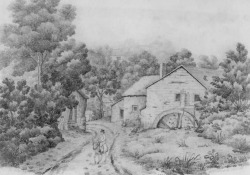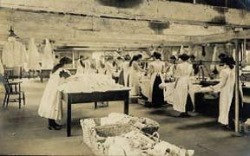Power and Glory - Industrial growth
Several of Truro’s 19th century industries had grown from earlier times. A new coal fired process smelted ore into tin, first at Newham then Calenick, before competitors started in St George’s Road and on what is now Trafalgar Roundabout.
At one time the spinning jennies and dye works supplying the Truro Carpet Factory used power from the Mill Pool, which is still visible today behind the Cathedral, and gave work to people who were otherwise unemployable through disability. Large numbers of women also worked there and it was reported during the 1890s that the factory was producing a thousand yards of carpeting a week.
Some physical evidence of industrial activity can still be seen in the City. The Leat system, which still flows today, was designed to power waterwheels and was fed by the Rivers Kenwyn and Allen.
Water power was put to many uses from grinding corn to the fulling of cloth. Although attractive, these wheels were a source of danger as Stanley Coombs found to his cost:
“I was out playing around where I shouldn’t have been in a house with a big water wheel in it... what we used to do was go one side and ride up the wheel to a crossbeam, lean over the crossbeam and kick the wheel round with our feet and make it spin... I ended up with me legs between the wheel and the concrete floor... the wheel hit me right leg, it was the bone that stopped it... I had a big cut there and they didn’t know if they could save the leg or no.”
The images on the right depict Scawswater mill on the River Allen, which in its lifetime was used for grinding corn, fulling cloth and a sawmill and The steam laundry at Moresk.

